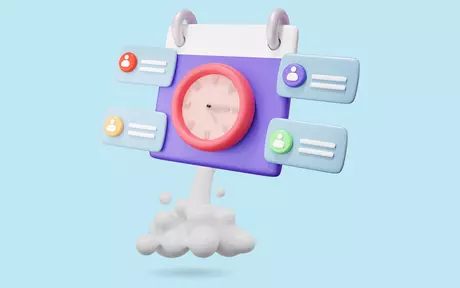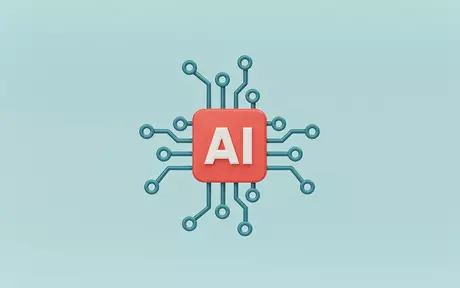
The top priorities and challenges of a modern CIO
Today's Chief Information Officer (CIO) looks very different from 35 years ago.
The modern CIO’s functions have changed perceptions of their job role, emerging from the back office to become a major player. Back in the '80s, a CIO was confined to the IT department. Today CIO functions are less about hardware and more about the hard questions of the business’ future - they innovate, strategize, and work with the whole organization.
Click to read Future-proofing your talent strategy with HCM - Blogs - FG
The changing focus of the modern CIO and the top modern CIO challenges
If you're a CIO, your "CIO priorities" have likely changed significantly in recent years. Network threats are more prevalent than ever — in 2018 alone, hackers stole half a billion personal records. You're now the "gatekeeper" of your company's intellectual assets and resources. And if data gets compromised, you'll get the blame.
Which issue concerns CIOs the most? In a recent CIO Magazine survey, CIOs said "keeping their organization safe" is now their top priority for organizational change. This, of course, includes cybersecurity but also covers data protection compliance and cyber resilience. Other organizational priorities for the modern CIO include debt reduction, increasing the company's digital footprint, modernizing governance, "killing" the data center, and analytics.
There's also been a change in spending habits. Over the years, the role and the CIO’s priorities have shifted from value preservation to value creation:
"Because IT is the backbone of most business functions, technology investments represent a growing percentage of corporate spending, and many organization stakeholders expect these investments to be aligned with business strategy," says the Wall Street Journal.
As organizations place an ever-greater emphasis on tech, CEOs know what to look for in a CIO. They look to CIOs to drive innovation and revenue-sharing throughout the entire organization.
What do CIOs care about in professional services?
CIO functions and responsibilities depend on the scope of the organization and the vertical in which it resides. Generally speaking, the professional services industry places a slightly higher priority on improving technological processes than other industries. In this vertical, expect the CIO to be sitting with the rest of the C-suite.
In professional services, the CIO assists senior executives in and out of the boardroom. They are there to:
- Strengthen the integration between business and IT
- Improve the return on IT investment, and
- Mitigate risk with a data-driven approach.
But current research shows that CIOs in professional services have lost direct control of overall IT spending. More than 60% of large global companies allow non-IT departments to lead digital and technology investments.
It seems investment in some technologies — namely, artificial intelligence (AI) and automation — drives this trend: "There is no longer business strategy and technology strategy, it's simply strategy with technology driving it," says Steve Bates, global leader for CIO services at KPMG.
This strategy could prove perilous. As the CIO has less financial autonomy and IT spending diverts to non-IT departments, there are privacy and cybersecurity risks. But organizations that balance business involvement with IT-led spending can still benefit.
Challenges faced by CIOs today
As the gatekeeper of so much "soulless" technology, it can be easy to forget that real human beings are the backbone of any organization.
CIOs should invest in People Experience — a discipline applied to software development that puts human impact at the top of the IT department's agenda. The Unit4 People Experience Suite recognizes people are your most important resource, not machines.
"Putting people at the center of your technology strategy highlights one of the most important aspects of technology; how it impacts customers, employees, business partners, society or other key constituencies," says Brian Burke, Vice President of research company Gartner. "Arguably, all actions of the organization can be attributed to how it impacts these individuals and groups either directly or indirectly."
And this isn't the only challenge. Software bloat makes once-simple processes far more complicated than they need to be. 48% of CIOs and senior IT executives say they have more applications than they actually need, and 70% say at least 20% of their applications are "redundant." To solve this problem, CIOs should integrate software and systems to manage their resources, people, and vendors.
"The weight of application landscapes is reaching critical mass; disruptive technologies have emerged," says systems integration company Capgemini. "It is no longer a question of 'whether' to rationalize, but rather 'when' and 'how' to do it."
Going forward, CIOs will also need to be more visible. As IT people require greater transparency from managers, the CIO needs to be more accountable, culpable, and answerable. For some CIOs who have decades of experience, this will be a culture shock, but in 2020, transparency is critical.
"In terms of achieving business relevance, CIOs believe that transparency provides the foundation for translating strategy into execution," says CIO Magazine. "With it, CIOs believe there can be a common understanding, vision, and even purpose."
Top CIO priorities for the immediate future
Expect more CIOs to prioritize innovation over information — new technologies and trends that expedite business growth. Machine learning and AI will continue to blossom, and smart CIOs will incorporate these technologies into their digital transformation and revenue-generating exercises.
There will also be a bigger, sharper focus on automation. The latest tools make it easy to automate tasks associated with even the oldest, creakiest legacy systems. Professional service management software, for example, simplifies manual data entry and provides CIOs with deeper, cleaner insights.
Cloud Migration – an opportunity for CIO-led change
Cloud computing is the No.1 choice for CIOs who want to modernize their IT portfolios. Some are still reluctant to make the jump, thanks to a sense that they lose even more control through migrating to the cloud. But cloud services can provide all the data governance, disaster recovery, and storage benefits CIOs are used to. And given the potential for automation and system integration, it makes more sense to migrate, especially for professional services firms that stand to create huge process efficiencies and improvements to service delivery by doing so.
The shrewd CIO will customize a cloud solution based on the organization's size, scalability, and requirements.
COVID-19 and remote working
The COVID-19 pandemic has changed the IT industry and forced CIOs to adapt quickly. CIOs should reassess their priorities and their teams' skillsets, as IT budgets will likely continue to suffer.
With the popularity of remote working, IT portfolios have shifted to the cloud. In industries like professional services, this is even more important. Companies that don't implement remote project management might buckle, and CIOs need to help the organization migrate to new technologies.
Final word
In the last 35 years, the CIO's roles and responsibilities have changed dramatically, and they've emerged from the IT department to claim their place in the C-suite. Far from standing for "career is over", the CIO is increasingly the "first officer" of any organization — the real captain of the ship.
How can Unit4 help?
Our specialty is helping you put that technological infrastructure in place so your organization's processes can evolve and empower your greatest asset – your people.
Unit4 can provide ERP platforms specifically designed for your unique needs - from creating a unified experience for all your back office functions to creating a fully orchestrated application environment across your entire organization with Unit4 Industry Mesh. Our HCM and FP&A solutions likewise provide the modern CIO with the up to date people and financial data needed to make mature strategic decisions about how the organization’s technology supports its overall goals.
To discover more, click here to book a demo and see what our ERP solution can do for your organization.
FAQ:
What is the difference between CIO and CTO?
The CIO is the face of the IT department for internal teams and the units it serves. It is the CIO's role to keep compliant business processes running efficiently so the company is productive and running smoothly.
The CTO looks outwards and often comes from a background as a creative technologist. The CTO's external focus points them in the direction of customer needs and what the business can do to support any partner companies that provide solutions based on the business's core technology.
What skills should a CIO have?
The CIO needs to be a skilled organizer and able to build the company's IT infrastructure so that business objectives are met. They must be able to communicate effectively with direct reports, employees from non-tech departments, vendors, members of the board, and colleagues in the C-suite, tailoring their language depending on the audience's knowledge. Their other main must-have skills are leadership and mentoring, strategic, proactive thinking, and a corporate visionary.
How technical should a CIO be?
A great CIO needs a detailed tech understanding to be able to dive deep into technology when needed and requires an acute knowledge of the marketplace.





